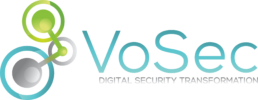
The European Union's (EU) AI Act went into effect June 10, 2024, sets a new standard for responsible AI development and deployment. This groundbreaking regulation aims to ensure AI systems are trustworthy, respect fundamental rights, and mitigate potential risks.
Enforcement begins December 10th, 2024.
What does the EU AI Act regulate?
The Act classifies AI systems into four risk categories: unacceptable risk (banned), high-risk, limited risk, and minimal risk. High-risk AI, such as facial recognition or AI used in critical infrastructure, faces stricter regulations. These regulations focus on areas like:
-
Transparency : Users must be informed when interacting with AI. -
Data Governance : AI training data must be high-quality and mitigate bias. -
Risk Management : Organizations must implement robust processes to identify, assess, and mitigate AI risks.
What happens if you're not compliant?
Penalties for non-compliance can be significant, including fines up to €30 million or 6% of a company's global turnover (whichever is higher). Additionally, non-compliant AI systems may be banned from the market.
The Road to Compliance: an Enterprise Readiness Playbook
The EU AI Act implementation is phased, with varying deadlines depending on the risk category. However, taking a proactive approach is crucial. Here's a simplified playbook that borrows on key map, measure, mamahe comcepts in the NIST RFM to get you started:
Phase 1: Discovery & Awareness (Now-December 2024)
- Raise awareness about the EU AI Act across senior management in the business lines, risk management, and cybersecurity.
- Develop clear definitions for AI systems, focusing on high-risk categories.
- Conduct an AI inventory to identify all AI systems used in your organization. This includes 3rd-parties, SaaS solutions, etc.
Phase 2: Roadmap & Controls (Ongoing)
- Prioritize risks: Rank the identified risks according to their likelihood and potential damage to your organization.
- Develop a compliance roadmap outlining the tests and evidence needed for each AI system, particularly high-risk ones.
- Establish policies and training programs on responsible AI use.
- Implement maker-checker controls for AI development and deployment.
Phase 3: Governance & Transparency (Ongoing)
- Develop a comprehensive AI Governance framework with clear roles and responsibilities.
- Integrate AI compliance into your internal audit plans.
- Foster collaboration between departments to ensure a cohesive approach.
By following these steps and leveraging best practices like the NIST AI RMF, you can achieve EU AI Act compliance and build a foundation for trustworthy AI development. Remember, responsible AI isn't just about regulations, it's about building trust and ensuring ethical technology for a better future.
